NOTA: (*** desculpem a tradução mas como não sei o nome técnico em portugues....e "CDV" não quer dizer concerteza isto...delay não é controlo...mas como entender é uma coisa e traduzir já é outra...****)

No diagrama do REALOEM é a peça nº 14
Theory of Operation - What is a CDV?
The Clutch Delay Valve (CDV) is a one-way restrictor installed by the factory between the clutch slave cylinder and clutch master cylinder, as shown in Figure 1. It "delays" the engagement of the clutch, much like old record players used a damped tone-arm to gently lower the needle onto the surface of a record.
Because of this valve, no matter how quickly you lift your foot off the clutch pedal, the clutch engages the flywheel at a constant (slow) rate. In theory, it can save the driveline from shock, were an inexperienced (or immature) driver to dump the clutch at high RPM. But in practice, all it does is prematurely wear out the clutch and turn experienced drivers into people who, despite 20 years of practice, cannot shift gears smoothly. During parallel parking maneuvers, the delay can be infuriating, causing constant clutch slippage. And during hard acceleration, the large amount of clutch slippage can greatly shorten the life of your clutch. During normal, sedate driving, the shift from first into second gear is often jerky, leading passengers to question your skill. As the driver, you can see your passengers' heads bobbing back and forth during every shift! Yes, in their minds, they are laughing at you.
HOW TO
Removing the CDV is not hard takes about 30 minutes with 3 people.
Required tools and parts
11mm and 14mm box open end wrench
Dot 4 brake fluid
3 people (helps)
18 inches clear vinyl tube 1/4 in(id)
CDV with internals properly and carefully removed or obtain a pre-modified CDV from Zeckhausen Racing
Fluid stopper made from tubing and screw.
1. Jack up the car or use ramps to get access to CDV on the bottom of car. Open and remove driver side air cleaner assembly start by removing weather stripping
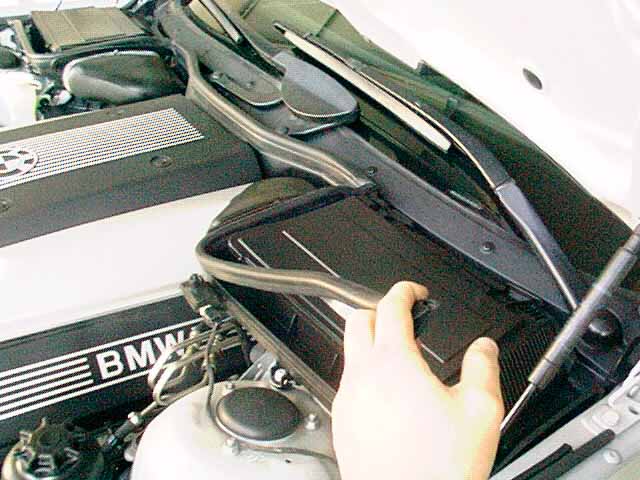
2. Remove retaining clip
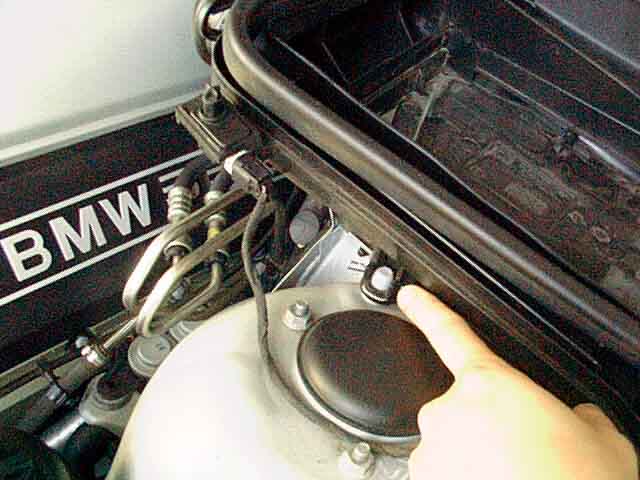
3. Unplug hood light switch
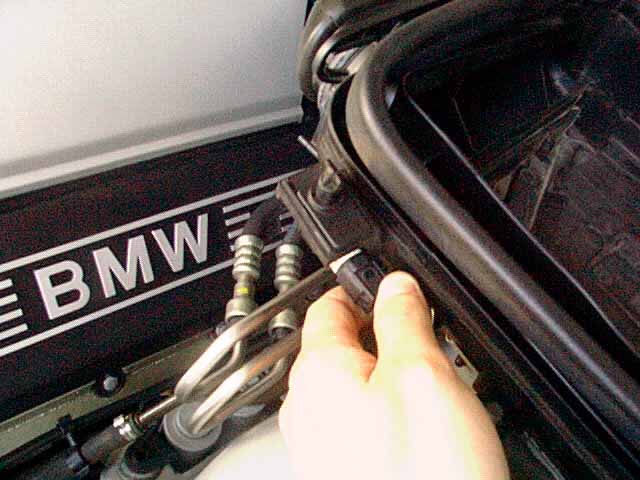
4. Disconnect duct and remove vent lid then remove assembly to expose master cylinder.
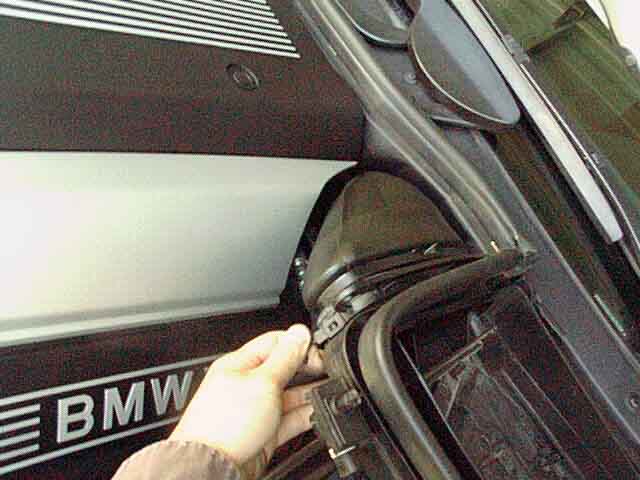
5. Top off mastercylinder. CAUTION brake fluid will eat paint. NOTE: Make sure you fluid level never drops below hose that feeds clutch, or else you have a lot of bleeding ahead of you.
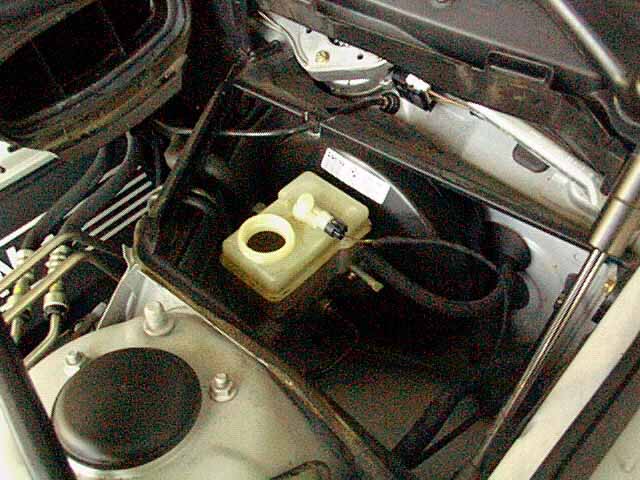
6. Locate the CDV bolted onto the transmission bell housing. Remove CDV. Attach stopper to end of pipe to keep air and fluid from dumping out.
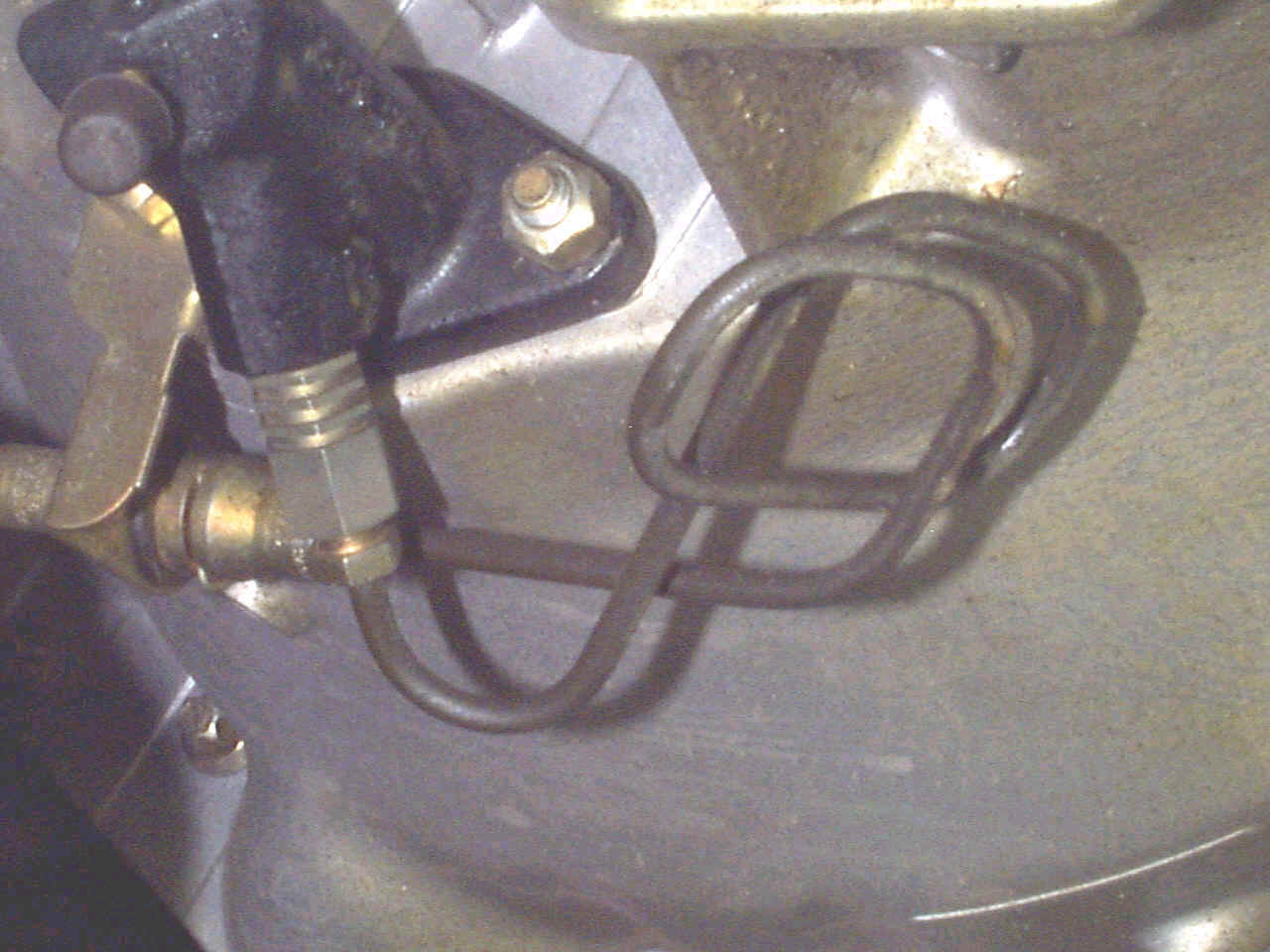
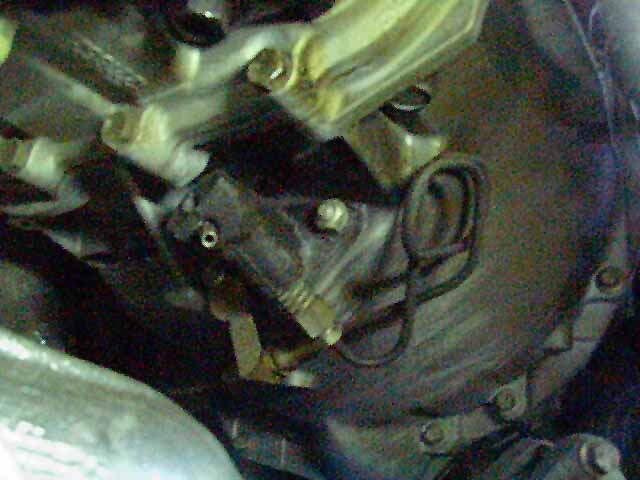
7. Properly modify a CDV or obtain one from Zeckhausen Racing.
8. Reinstall the CDV.
9. Bleed the system by attaching vinyl tubing to bleeding screw/nipple. Keep the wrench on the bleeding screw while person 2 from top gets ready to step on the clutch. Person 3 should keep an eye on master cylinder and have a bottle of DOT 4 handy, keeping fluid to its highest level. Release screw and step on clutch. Close screw and lift pedal up and do again till no bubbles in fluid.
BMW E46 - Remoção da Válvula de Controlo da Embreagem

This is an example of the "Lock Valve" that BMW has seen fit to install into the clutch hydraulic circuit of many of its newer model manual transmission cars. The lock valve has coloquially been named the CDV, or Clutch Delay Valve, as it delays the engagement of the clutch relative to the rate at which the driver releases the clutch pedal. This particular CDV was taken out of a 2001 E46 325iT (Touring, aka Sport-Wagon). It is quite likely that all the non-M E46 manual transmission cars have a valve like this valve installed at the factory (it is also common on other model BMW's such as the 5-series and Z-series cars). There is no clear consensus on whether the valve was ever intentionally installed on the E46 M3.
The 12/03 BMW ETK appears to show that the lock valve is not installed on any E46 M3 or 330Ci models. Yet there are some reports from folks with early model E46 M3's who did have the lock valve installed. So perhaps the only way to know for sure if you have one is to get under the car and have a look. Note that those folks who have removed the CDV from their E46 M3's report the design to be different than what I removed from my 325i. The E46 M3 CDV reportedly has a moving disc inside the body, which would appear to cause the hydraulic restriction to vary depending on whether the clutch was being disengaged or engaged (clutch pedal pushed in or released).
The part number for the 325i CDV which I removed from my 2001 Touring is 21 52 6 755 892 (this number is stamped on the part). I am not sure if this is the same part number as for the CDV found on the E46 M3, as the ETK does not show it at all on that model.
So what is this lock valve and what does it do?


The BMW "Lock Valve" (aka CDV) is a simple brass fitting with a small constriction which fits into the clutch hydraulic actuation circuit (at least this is so for the 325i unit, CDV's from other model BMW's appear to be slightly more sophisticated). The constriction limits the rate of fluid flow when the clutch is either engaged or disengaged. The presumed intent of adding this constriction in the clutch hydraulic circuit is to prevent sudden engagement of the clutch in order to reduce driveline shock-loading. In other words, "side-stepping" the clutch becomes impossible. The diameter of the 325i CDV constriction is 1.5mm where the rest of the clutch hydraulic lines have an ID of roughly 3.5mm. What really limits fluid flow is cross-sectional area, and in this case the lock valve reduces the area by 82% - a substantial constriction.
"So what?" - one might ask. BMW designed the car and the valve, what's the problem? Well the problem is that the lock valve greatly reduces the ability of the driver to execute fast and smooth shifts. In fact, the valve almost guarantees that fast shifts will be accompanied with a fair amount of clutch slip. Furthermore, the valve acts as a "damper" to clutch motion, even during normal everyday driving. Removal of the lock valve provides a noticeable improvement in clutch feel and sensitivity. Bottom line: removing the lock valve makes the car a lot more fun to drive, and reduces that rubbery disconnected feeling from the clutch pedal.
In case you want to determine if your car has a CDV, and if it does and you want to remove it, then the following picture will help. The lock valve is installed towards the end of the clutch hydraulic circuit, right before the clutch slave cylinder on the side of the bell-housing. There is a rubber hose extending down from the firewall (beneath where the driver's feet are). This hose carries hydraulic fluid from the clutch master cylinder located on the pedal cluster, down to the slave cylinder. Where the rubber line transitions to the metal line leading into the slave cylinder, you will find the "Lock Valve". The picture below will help in identification.
The valve is easy to remove - you'll need two 17mm open end wrenches to do this. Once the valve is out the end of the rubber hose (which has an identical shape) simply takes its place. Some fluid will drip out so you will want to bleed the clutch circuit when you're done. That's it. Less than a 30 minute job.
My only regret? That I drove the car for over two years before removing the valve!
SUBSTITUIÇÃO DA VÁLVULA POR OUTRA NOVA
For this purpose, I ordered an empty CDV; a valve with its internals removed.
The source and information:
http://www.zeckhausen.com/CDV.htm#Theor ... 0Operation.
Good communication over e-mail and fast delivery from USA.
As you can see, the CDV doesn't have anything inside.. It's just to be bolted in the place of the old one thus avoiding bending the clutch lines and manufacturing custom made bolts/nuts to fill the gap.

I had the luxury of lifting the whole car in the garage and I could easily work. If you are attempting this, a good set of jack stands is a must.

Car from below. The CDV is easily seen without removing any covers. Just next to the gearbox under passenger's side.

After replacing the CDV, I had to bleed the clutch from the bleed screw. It's good to have one person in the car pumping the clutch and another person under so that when all air comes out, to tight the screw. Pumped the clutch 3 times.

I used this pair of clamps to prevent clutch/brake fluid running.

The removal of CDV is dead easy. I don't remember the key sizes but I used to pair of keys, one to hold it and one to unscrew it. Placed the new one in the same manner.
Finally, don't forget to top-up the brake/clutch fluid which was lost during bleeding. I used the OEM BMW DOT4.

Fica aki o meu 1º post DIY que resolvi fazer após a recolha de info que vi na net de uma coisa que achei curiosa e que talvez queiram experimentar...

